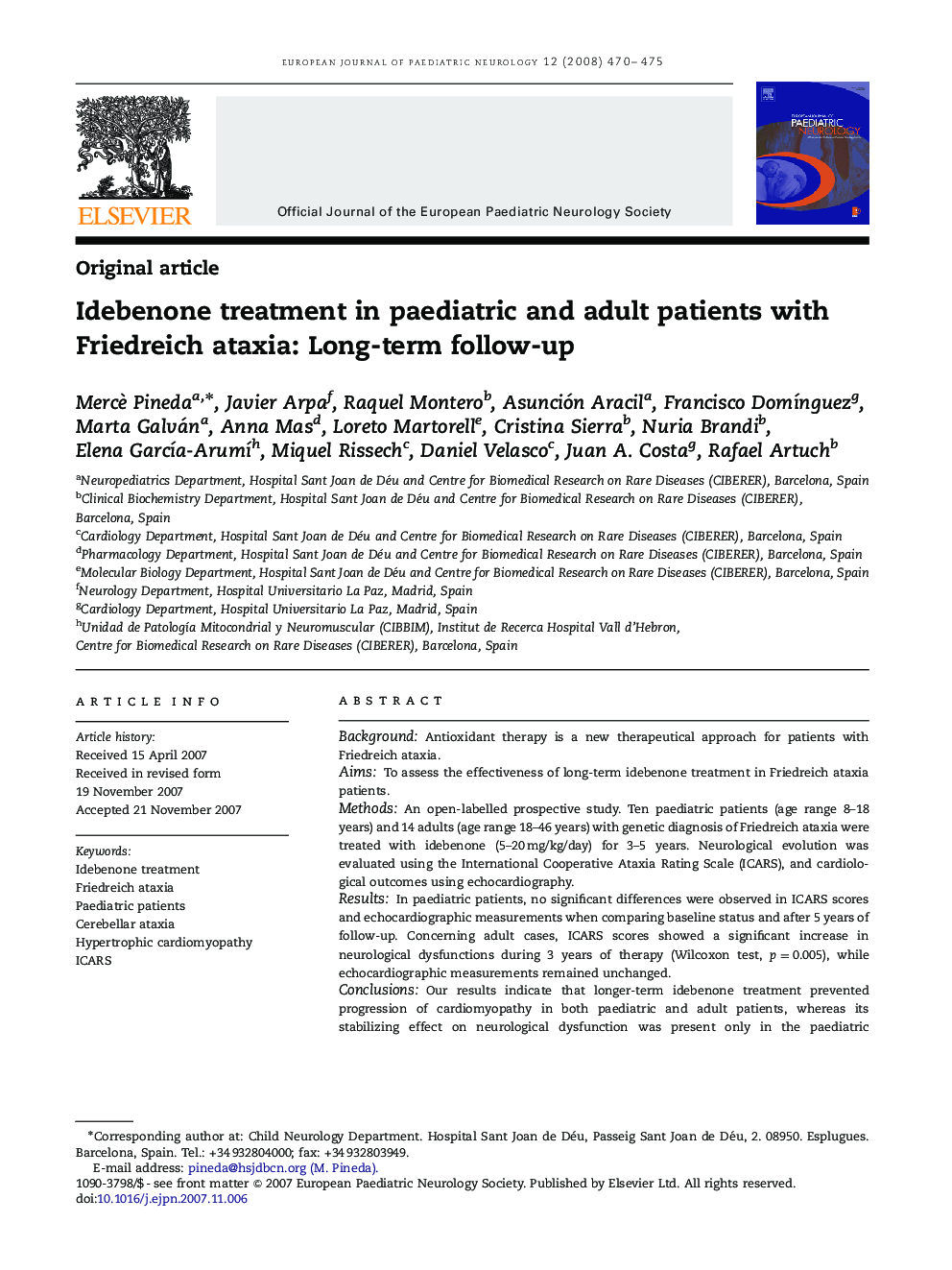| Article ID | Journal | Published Year | Pages | File Type |
|---|---|---|---|---|
| 3054725 | European Journal of Paediatric Neurology | 2008 | 6 Pages |
BackgroundAntioxidant therapy is a new therapeutical approach for patients with Friedreich ataxia.AimsTo assess the effectiveness of long-term idebenone treatment in Friedreich ataxia patients.MethodsAn open-labelled prospective study. Ten paediatric patients (age range 8–18 years) and 14 adults (age range 18–46 years) with genetic diagnosis of Friedreich ataxia were treated with idebenone (5–20 mg/kg/day) for 3–5 years. Neurological evolution was evaluated using the International Cooperative Ataxia Rating Scale (ICARS), and cardiological outcomes using echocardiography.ResultsIn paediatric patients, no significant differences were observed in ICARS scores and echocardiographic measurements when comparing baseline status and after 5 years of follow-up. Concerning adult cases, ICARS scores showed a significant increase in neurological dysfunctions during 3 years of therapy (Wilcoxon test, p=0.005), while echocardiographic measurements remained unchanged.ConclusionsOur results indicate that longer-term idebenone treatment prevented progression of cardiomyopathy in both paediatric and adult patients, whereas its stabilizing effect on neurological dysfunction was present only in the paediatric population, mainly before puberty. This suggests that the age at which idebenone treatment is initiated may be an important factor in the effectiveness of the therapy.
